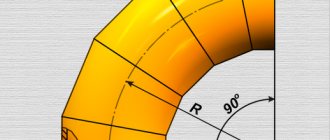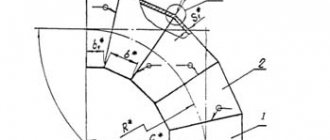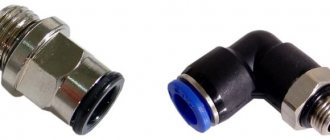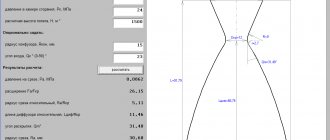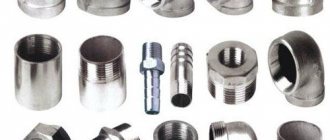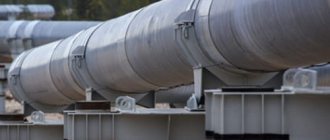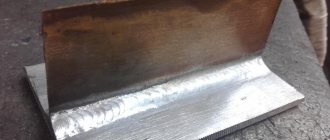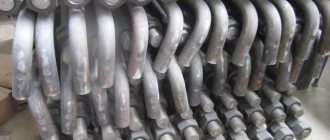Steel bends are products that are used to change the direction of various pipelines. They are pipe segments bent at the desired angle. They are usually carried out using special pipe bending machines and are mounted on the pipeline by butt welding. The operational scope of these parts is incredibly wide, but they are most often used in the installation of oil, gas and water supply communications.
Bends for steel pipes are made of stainless steel, alloy steel, and they can also have a protective zinc coating
Scope of use of steel bends
Let's consider the main areas in which these products are used:
- plumbing systems;
- heating communications;
- industrial highways for various purposes;
- oil and gas industry;
- chemical industry;
- pumping stations.
Such products are used for wiring communications for any purpose, however, not all of their types are suitable for certain pipelines. For example, for laying main networks, as a rule, steeply curved seamless, stamped-welded, and bent products made of stainless steel, alloyed, and galvanized bends are used. This is due to the fact that such communications have large cross-sectional dimensions and can operate at high pressure in the working environment.
Helpful information! Welded bends are used for various communications. The pressure in such pipelines does not exceed 2.5 MPa. The cross-sectional indicators in such pipelines are usually more than 1000 mm.
For household communications, steeply curved or bent types of bends are an excellent solution. And point products are very popular when installing pipelines at enterprises that produce various mineral fertilizers.
Such a part as a bend can be found on a pipeline of any type and purpose.
As mentioned above, such a product provides rotation of the structure. Bends are used not only in pipelines, but also in communications responsible for cleaning indoor air. The most popular in this case is a galvanized ventilation outlet.
Sewerage
There are much fewer docking methods here.
Cast iron
Traditionally, chasing is used to connect cast iron sewers:
- The pipe is inserted into the socket of the fitting;
- The space between them is tightly caulked with kabalka - oiled organic fiber;
- Then the joint is covered with cement mortar or filled with molten sulfur.
Accordingly, fittings are a combination of bends with the same diameter as the pipes and sockets.
However, new cast iron sewer fittings and pipes are increasingly equipped with rubber seals, ensuring tightness during ordinary joining.
PVC and polyethylene
Both polyethylene and the much more common PVC pipes for sewerage, and fittings for them, are again equipped with rubber seals in the sockets.
There are two subtleties associated with docking:
- It is advisable to remove the outer chamfer from a pipe cut to size. Otherwise, it will be difficult to insert it into the rubber-sealed socket.
- A connection made with sealant is guaranteed not to leak due to drying of the rubber.
Tightness is ensured by a rubber seal; The sealant additionally fixes the pipe and protects against leaks when the rubber dries.
Advantages of steel bends
Pipeline fittings are widely used in any installation, and steel turning parts are considered the backbone of any pipeline. Along with tees and transition elements, they play an important role in connecting communications and increasing its strength.
Let's look at the main advantages of these products:
- with the help of these products a smooth rotation of the pipeline structure is made;
- the characteristics of metal bends allow them to be used in difficult operating conditions - they have high strength characteristics and can also be operated at high pressure;
- steel products are resistant to temperature fluctuations;
- the cost of such bends is quite affordable;
- have a long service life when used in aggressive industrial conditions.
The most popular today are models that are curved at an angle of 45 and 90°.
The most popular parts are those with a rotation angle of 45 and 90 degrees.
Advertising and Marketing
In addition to working with target customers, it is necessary to use methods to attract a wider range of buyers. For such a specific product as taps, there is no point in organizing a large-scale advertising campaign. But certain marketing moves need to be taken. The following activities will be most effective:
- development of your own website describing the range of products, their features and advantages;
- active online promotion using contextual, teaser and trigger advertising;
- sending commercial offers;
- posting posts and discussions on thematic and city portals;
- publishing advertisements on Internet sites;
- presentation of information in target media;
- participation in exhibitions, fairs, and other events in the relevant field.
An effective method of expanding the customer base would be a loyalty program that provides discounts to regular or large wholesale customers.
Materials
In order not to make a mistake when choosing a material, experts advise on operational features, as well as the type of working environment for which it will be used.
The following bends can be found on sale:
- carbon products;
- alloyed parts;
- stainless steel;
- bends are galvanized.
For general purpose communications, parts made from carbon steel are ideal. If the working environment in the system consists of aggressive chemicals, then in this case it is recommended to use stainless or alloyed bends.
Alloy steel products can be used at temperatures from −60 to +40 °C. The pressure they can withstand reaches 7.4 MPa. They are often used when installing pipelines in cold climates, as they have high resistance to corrosion at low temperatures.
Stainless steel bends are used in pipelines that transport hot media (water, steam), as well as chemically active substances with both alkaline and acidic conditions. Stainless steel is highly resistant to the damaging effects of corrosion and is therefore ideal for such purposes.
Today, galvanized bends are quite common. The material for such products is galvanized steel. Galvanized steel products are coated with a protective anti-corrosion layer at the production stage.
Parts made from stainless steel are the most resistant to corrosion and therefore durable
As a rule, this layer is represented by zinc, however, others (chrome, nickel, etc.) can also act as protective elements. The galvanized steel outlet can withstand fairly high pressure and is resistant to aggressive environments.
Types of bends
The range of metal bends is incredibly wide, due to their design features and various areas of use. Let's look at the main types of these products:
- steeply curved;
- stamp-welded;
- welded sectional;
- welded sector (segment);
- bent;
- point.
Steeply curved . All main parameters of such products are described in the relevant documentation (GOST 17235–2001, GOST 17235–83). They are produced by pulling a pipe. Broaching is performed through a special mold on pipe bending equipment, resulting in a high-quality part.
Steel bends for steeply curved pipes are usually made of carbon and stainless steel. The angle of the steep bend can be: 30, 45, 60 and 90°. The cross-sectional dimensions of such bends vary from 18 to 426 mm. The pressure to which such a tap is resistant is up to 16 MPa.
Stamp-welded. Such parts are made from sheets by welding. This production method allows us to obtain a thick-walled product with increased strength characteristics. Stamp-welded products can have cross-sectional dimensions up to 1420 mm. They are used in the main communications of the oil and gas industry. Stamp-welded parts are made from alloy or stainless steel and are regulated by technical specifications (TU).
Stamp-welded bends are thick-walled products used in pipelines with high operating pressure
Welded sectional. They are made from separate sections of pipes that are welded together, resulting in a finished part. The price of such bends is quite small, however, their strength and reliability indicators are lower than those of other types. Manufactured from carbon or low alloy steel. The cross-sectional dimensions of such parts vary from 108 to 1620 mm.
Note! As a rule, welded sectional products are used when installing pipelines that have low operating pressure (up to 2.5 MPa). The temperature in such communications should not exceed +425 °C.
Welded sector . Such bends are used in pipelines that have a large cross-sectional size. Such communications have a certain angle of rotation of the flow of the working medium, which is transported under low pressure. The angle of such a product depends on the operational features and can be: 30, 45, 60 and 90°.
Chiseled. This type is made from special cast blanks on a lathe. It is worth noting that spot products have the highest cost. This is due to the very complex technological process of their manufacture.
Their main advantages are:
- are manufactured with any wall thickness;
- resistant to high pressure (up to 100 MPa).
Bent. Such bends, as a rule, are used in cases where it is not possible to install a steeply curved version of the product on the pipeline. Bent parts do not have such a large bending radius as steeply curved parts, and are also equipped with a straight section. The angle of such products varies from 2 to 90°. Their use is regulated by relevant documentation (GOST and TU). Bent bends are installed in communications whose temperature ranges from −50 to +510 °C.
Bent bends are produced by bending hot or cold blanks using special bending equipment
Pressure indicators for such bends reach up to 100 MPa. Bending of such products is carried out using special pipe bending equipment. They can be bent both cold and hot.
Galvanized chimney pipe: types, which is better and how to make it yourself
Hello, dear reader! Today we will consider the question of how good a galvanized pipe is for a chimney. The need for such an assessment arises every time before the owners of private houses when constructing or replacing a chimney. Let's find out all its pros and cons, how best to use it and whether it can be done with your own hands.
What is
The product is a metal pipe coated with a layer of zinc (pictured).
The coating creates a protective film that protects the iron from rust for a certain period, until the zinc layer is mechanically damaged.
Material characteristics
Zinc is a metal with a melting point of 419 C.
The composition of the zinc coating includes an alloy of zinc (99.97%), aluminum, lead and other metals. The layer thickness is standardized by GOST and ranges from 10 to 60 microns.
In air, zinc is covered with a thin film of oxide, which acts as a protection for steel from corrosion.
Galvanized steel is resistant to precipitation and temperature changes.
Convenient to process, easy to bend, roll, stamp and other mechanical loads.
Can galvanized pipes be used for chimneys?
Chimneys with zinc coating are used under certain conditions.
When zinc is heated to 419°, it begins to release substances harmful to humans. Therefore, it is recommended to install outlets made of this material in smoke exhaust systems where the temperature does not exceed 350°C.
The 2009 Ministry of Emergency Situations rules prohibit the use of metal smoke removal agents for coal-fired stoves.
In addition, a single-wall galvanized outlet will burn out after one or two seasons. In practice, it is used as an outer casing in double-walled structures with insulation.
Advantages and disadvantages of galvanized pipes
Users include the following advantages of a galvanized chimney pipe:
- long-term immunity to corrosion;
- rapid heating of the chimney and, as a result, ensuring good draft;
- simple assembly method;
- a smooth surface inside the channel, which does not allow soot to linger on the walls;
- Possibility of venting through the wall of the building.
Flaws:
- short service life of a single-wall outlet;
- when cutting a product, the cut lines begin to rust after a short time;
- minor damage leads to the destruction of the protective layer;
- formation of a large amount of condensate.
Types of galvanized iron pipes
Based on the design features, two types of these products are distinguished: single-circuit and double-circuit insulated.
The first ones consist of single-wall bends. They are installed in heating devices with low temperatures or in brick chimneys.
The second ones include two outlets: an internal one made of stainless steel and an external one made of galvanized steel. An insulating agent is placed between them. They are called “sandwich” pipes and have managed to prove their effectiveness.
Life time
Galvanized outer pipe in a sandwich, when properly installed and manufactured, can last 45 years.
A single-circuit chimney will burn out quickly; its service life, depending on the intensity of use, will be one to two years.
What is better galvanized or stainless steel?
It is recommended to make the initial section of the chimney channel from the boiler, where the temperature is especially high, from stainless steel. The inner pipe of the sandwich is made from it, which allows it to be used in any smoke removal system.
Of course, this type of steel is the most durable and rust-resistant. In these parameters it is superior to galvanization. Its main drawback is its high price.
To reduce the cost of sandwiches, galvanization is used to make the casing.
Make it yourself or buy it
Making a pipe from sheet material is not an easy task. Requires certain equipment and skills. But if the length of the chimney is short, and it is straight, without bends or bends, you can do this work yourself.
In other cases, it would be wiser to purchase or order a galvanized chimney from professionals.
Selection tips and approximate price
Manufacturers offer a large selection of both single-circuit galvanized bends and sandwich pipes with a galvanized shell. There are certain parameters by which you should select elements for the chimney:
- the diameter of the boiler outlet pipe must be equal to or less than the cross-section of the chimney outlet;
- attached chimneys can have no more than three bends along the entire length of the channel.
- Manufacturers indicate the required chimney diameter for boilers in the unit’s passport;
- The wall thickness for the outer casing must be at least 0.5 mm, usually 0.55 mm is used.
The price of single-circuit galvanized steel pipes depends on the diameter and thickness of the sheet metal. A meter bend d=110 mm costs 190 rubles, and d=250 mm costs 390 rubles.
A stainless steel + galvanized sandwich of the same diameter, 0.5 mm thick and 100 cm long will cost 1,230 rubles.
Making galvanized pipes with your own hands
A special feature of a factory-made galvanized pipe is its reliable welding seam.
If you have an argon unit at home and you are a big welder, this makes a difference. Surely what you will get is not a pipe, but a feast for the eyes.
First you need to choose a galvanized sheet for the pipe. Professionals make bends with walls 0.55 mm thick. At the same time, it must be taken into account that the thinner the material, the easier it is to bend.
Required tools and materials
You will need:
- hand scissors for metal;
- mallet with a wooden striking part;
- roulette;
- square;
- metal ruler;
- pencil, preferably a construction pencil;
- pliers.
For the convenience of bending work, a simple workbench is equipped where markings are made. A metal corner (40×40 mm or more) with a length of at least 100 cm, a steel round shape of the required diameter, is attached to the table.
Cutting out the workpiece
Let's look at how to make a pipe with a cross-section of 100 mm.
Calculate the width of the workpiece:
- determine the circumference as the product of the cross section and the value of pi equal to 3.14;
- 15 mm are allocated for the bends for the connecting seam.
In total, for a 100 mm bend, a workpiece with a width of 3.14 × 100 mm + 15 mm ≈ 330 mm is cut out.
Take into account that the pipes are made slightly cone-shaped for ease of installation using the socket method. Therefore, one side measures 330 mm, the other 340 mm (in the figure).
Formation of a profile
On the cut-out workpiece, mark a fold line for a fold of 5 mm on one side, twice 5 mm each on the other.
The sheet is laid on a workbench, the edge is aligned with the corner. Using a mallet, gradually bend it at a right angle. Then the workpiece is turned over and the fold is placed on the canvas.
In the same way, a 10 mm bend is made on the other edge of the sheet, and another 5 mm wide on it.
Next, the workpiece is manually bent on the forming tube, using a mallet.
Processing the butt seam
After obtaining a round shape of the workpiece, it is placed on a round form or an additional corner, the folds are connected into a lock, tapping them along the edges with a mallet. At the narrow end of the future pipe, the folds are slightly cored. Tap the entire length of the joining seam with a mallet, compacting the folds. The seam becomes almost permanent.
Sizes of steel bends
The angles of these products may be different, as well as the diameter sizes, however, all products are subject to certain standards. Standard angles are usually:
- 15°;
- 30°;
- 45°;
- 60°;
- 90°;
- 180°;
The weight of the part can also be different and depends on its diameter. This dependency is shown in the table below.
Table 1
| Du, mm | Weight, kg |
| 820 | 376 |
| 720 | 275 |
| 630 | 219 |
| 530 | 138–153 |
| 426 | 78–97 |
| 377 | 61–75 |
| 325 | 39–56 |
| 273 | 27–35 |
| 219 | 13–20 |
| 159 | 6,1–11 |
| 133 | 3,3–5,7 |
| 114 | 2,2–3,8 |
| 108 | 2,5–3,6 |
| 89 | 2,3 |
The choice of part is made taking into account the size of the pipeline. There are bends of various cross-sections (from 89 to 2000 mm). It is also worth noting that, if necessary, in production you can make an individual order for a rotating element, which will differ in diameter or have a non-standard angle.
Premises and staff
When choosing a building, you should take into account that it must contain several zones with certain minimum size requirements:
- workshop – from 100 sq. m;
- raw materials warehouse – from 30 sq. m.;
- warehouse for products – from 30 sq. m;
- office, utility room with bathroom - from 40 sq. m.
In total you will need at least 200 sq. m. total area. There are no special requirements for the arrangement of premises in this area. It is necessary to comply only with general provisions and standards regarding the organization of the production process, labor protection and personnel safety.
The most suitable location for the enterprise would be a building in an industrial area or just outside the city. Here it is easier to find a premises with all the necessary communications and an affordable rent. It is important to provide good transportation for employees and access for trucks.
The following employees must be recruited:
- manager;
- accountant;
- manager of a warehouse complex;
- supply and sales manager;
- line operators;
- auxiliary workers;
- cleaning woman.
The number of production personnel depends on the amount of installed equipment and the degree of its automation. Modern high-tech lines require 2 operators and 1 support worker per shift.
Welding of bends
The process of installing a rotating element on a pipe is a rather complicated undertaking and requires special skills in this area. Such welding is carried out only by specially trained welders.
Welding of bends can be performed using different methods, each of which has its own rules
Installation of the outlet on the pipeline is carried out in compliance with the necessary standards set out in the relevant instructions (for example, VSN-006-89).
Important! Before starting welding work, you must make sure that the surfaces being welded do not contain any defects. If any defects are found, they must be corrected.
It is worth remembering that you need to control the displacement of the inner edges. There is a rule in this regard: when welding a pipe and a bend with equal cross-sectional indices, the displacement should not exceed 2 mm. Centering of products is carried out using special devices - rotators.
In manual electric arc welding, processing of the first root weld is performed with direct current. In case of a break, it is necessary to maintain the required temperature at the welding site. After completing the first welding line and after grinding it, proceed to the second seam. The time between these two events should not be more than 5 minutes. This is due to the fact that the second line must pass along the uncooled root seam. Once both lines have been completed, fill grooves and capping joints are made. The facing seam must protrude 1–3 mm above the surface of the pipeline.
Product quality
All bent bends manufactured on mills are of excellent quality and meet all standard requirements.
To optimize the processes of balanced operation of equipment, the manufacturing company has remote access from offices in Germany, which allows them to control the quality of their products at the European level. Finished products and raw materials are subjected to detailed visual and measuring control. Quality control of products is carried out in accordance with the requirements of GOSTs (GOST 20415, 18442, 1497, 9454, 6996, etc.) and developed specifications.
Pipe rotator
In production, welding of bends to pipes is carried out using special equipment. Typically, these special equipment are rotators. The parts to be welded are clamped in the device and rotate around their axis, which makes it possible to perform high-quality welding of the outlet.
Let's consider the main advantages of using a rotator when welding a rotary product with a pipe:
- allow you to weld pipes with large diameters;
- the use of an autonomous drive in the rotator design allows you to regulate the rotation speed of the part;
- ensure precise alignment of pipes;
- can work not only with straight parts, but also with more complex, from a structural point of view, elements (for example, tees).
Today, there are many types of bends that allow you to solve any problem when installing pipelines. At the same time, a wide range of these products obliges specialists to study a large amount of information in order to know and comply with the features and rules for using all such products.
Legal registration of business
For this business, it is better to create an LLC, since in the case of an individual entrepreneur, the company’s obligations fall on its property.
In any case, for registration you need to submit an application to the local authorities of the Federal Tax Service, indicating the OKVED codes corresponding to the type of bends being produced:
- 22.21 – Production of plastic plates, strips, pipes and profiles;
- 24.20 – Production of steel pipes, hollow profiles and fittings.
Along with the application you must provide:
- photocopies and originals of documents: for individual entrepreneurs – personal (passports, TIN);
- for LLC – constituent ones, as well as a title deed for ownership of real estate, confirming the legal address.
If you register on your own on the Unified State Services Portal, you do not need to pay a fee. For an LLC, it is mandatory to deposit at least 10,000 rubles of authorized capital into the account.
Another document is a notice of transition to the selected tax regime. The general taxation system is extremely disadvantageous and is only necessary for very large companies. A small workshop for the production of bends is best suited for the simplified tax system according to the scheme of 6% of income.


